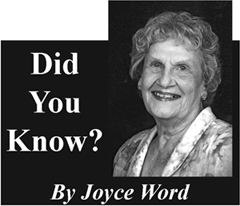Christmas is truly creeping up on my one day at a time, and as is usually true the first week of the month was busy beyond measure. On Monday, I helped at the Annual Betty Powell mean that is served to anyone who cares to pick up a plate. It is drive through only and we served about 1,200 plates. I opted out of serving food this year and instead carried plates to be filled at the food line.
Tuesday, we had Auxiliary meeting and discussed what had to be finished for our annual Christmas sale and bake sale that would be on Friday. After the meeting, several of us went to our workshop and finished most of the tray favors that needed to be done to finish December. We generally make tray favors for the hospital patients each month, but in December try to make one for each week of December! The patients seem to enjoy the little extra attention and we really like doing it. And as usual, Wednesday found me behind the desk in the gift shop. It was a busy day and there were lots of people in and out, with most of them buying something they needed for a gift.
Thursday was a day for baking, and I started early in the morning and was finished with everything I planned to make. However, I had decided Wednesday afternoon on the way home from work that I didn’t need anything at the grocery store. Wrong. I had decided earlier in the day to make something that they could buy and take back to their office and eat…not going to the store, this didn’t happen! I guess since no one knew about it, no one missed it and I got a few minutes more sleep. Friday was a horrible morning to be out early as the fog was thicker than it had been so far this year. I had to be really careful driving town and on to the hospital, but we did really well on our sale, and the work and worry was worth it.
Remember during these stressful days to take care of yourself, your family would rather have a few things not done, a few less cookies baked and have time with you in good health, both mentally and physically instead!
The Story of Cookies for Santa
Almost as much fun as the toys under the tree for a young boy and girl are the other signs that Santa Claus really did come to visit during the night—the glass of milk is empty and all the cookies are gone, nothing left but a few crumbs.
Nobody seems to know just who first came up with the idea of leaving a snack to keep Santa’s energy up during his whirlwind Christmas voyage. One researcher has traced the tradition as far back as 1908 to an article that appeared in a New York newspaper.
The story reported that children in one family left a meal of sandwiches, cake and coffee for Santa. To their delight, the next morning the food was gone and in its place was a note from Santa thanking them for their kindness.
It wasn’t unusual in the early 1900s for thoughtful children to remember Santa’s reindeer. Accounts of children leaving carrots for the team, and of rural youngsters, leaving piles of salt on their windowsills.
The reindeer probably have not fared so well in recent years, although Santa may be sharing some of his milk and cookies. It is a wonderfully whimsical food tradition; the stuff a child’s dreams are made of.
This cookie recipe is one that I’ve made since the mid ‘60s when I first got it, the combination is great. If I’ve already given you this recently, please forgive me, but, it is a great recipe.
Chewy Oatmeal Cookies
¾ cup butter or margarine
½ cup granulated sugar
1½ cups packed brown sugar
2 eggs
1 teaspoon vanilla
1¼ cups flour
1 teaspoon baking powder
½ teaspoon baking soda
1 teaspoon salt
2½ cups quick cooking oatmeal (not instant)
1 cup chopped pecans
1 cup coconut (optional)
Cream together thoroughly, the butter or margarine and the sugars, add the eggs and vanilla, and mix well. Mix together the flour, baking powder, baking soda and salt and stir in. By hand, stir in the oatmeal, pecans and coconut if used. Drop by rounded teaspoonfuls onto lightly greased baking sheets and bake at 375ºF for 12 to 15 minutes. Makes 4 to 5 dozen, depending on size spoon used.
Fudge
1 jar marshmallow cream
1½ cups granulated sugar
2/3 cup evaporated milk
¼ cup butter
¼ teaspoon salt
12-ounce package chocolate chips
1 teaspoon vanilla
¾ cup chopped pecans
Combine marshmallow cream, sugar, milk, butter and salt in saucepan; bring to a boil, stirring constantly for 5 minutes. Remove from heat. Stir in chocolate chips, vanilla and pecans. Spread into 9-inch square pan. Chill until firm. Cut into 1-inch squares. Store in airtight container.
Margaret’s Pecan Pralines
2 cups granulated sugar
1 cup buttermilk or clabber
1 level teaspoon baking soda
1 teaspoon vanilla
1 cup pecans (can use halves or chopped)
Use a large pot and slowly boil to soft ball stage (240º to 250ºF), the sugar, buttermilk and baking soda. This mixture turns brown as it cooks and needs to be stirred constantly. Take off heat when it reaches soft ball stage and stir in vanilla and pecans. Stir and beat with a spoon (wooden is best) until it looks as if it is going to turn to sugar. Drop by spoonsful onto waxed paper or foil Cool completely. Store in airtight container.
Peanut Brittle
Before you start making this, cover a cookie sheet with foil, butter well, and sprinkle with granulated sugar to coat. Set aside.
1 cup sugar
1 cup white corn syrup
2 cups shelled, raw peanuts
1 teaspoon baking soda
Combine sugar, peanuts and syrup. Cooking stirring constantly until it is light brown in color, about 16 to 20 minutes.
When mixture is light brown, remove from heat and stir in baking soda. This will cause mixture to foam up. Immediately pour onto prepared cookie sheet and spread to sides of pan. Allow to cool completely, break into pieces and store in airtight container.
The “100” Cookies
1 cup sugar
1 cup brown sugar
1 cup softened margarine or butter
1 cup oil
1 egg
1 teaspoon vanilla
1 cup crisp Rice Krispies®
1 cup oatmeal
1 cup coconut
1 cup chopped nuts (any kind)
½ teaspoon salt
3½ cups all-purpose flour (not necessary to sift)
1 teaspoon baking soda
1 teaspoon cream of tartar
In large mixing bowl, mix together first six ingredients. Stir in next four ingredients, mixing well. Sift together salt, flour, baking soda and cream of tartar. Add to previous mixture and mix well. Drop by spoonsful onto a parchment paper-lined baking sheet. Bake at 350º for 12 to 15 minutes or until lightly browned.
Have a great weekend, and don’t worry if you don’t get everything done on time. The world will not stop spinning on its axis if you don’t have everything perfect. Take time to spend with your family, they would rather have your time than have everything picture book perfect, and you completely worn out. Over the years, I have learned this, sometimes the hard way. If you expect perfection from yourself and those around you, you are going to be disappointed person many times more than you would like.

